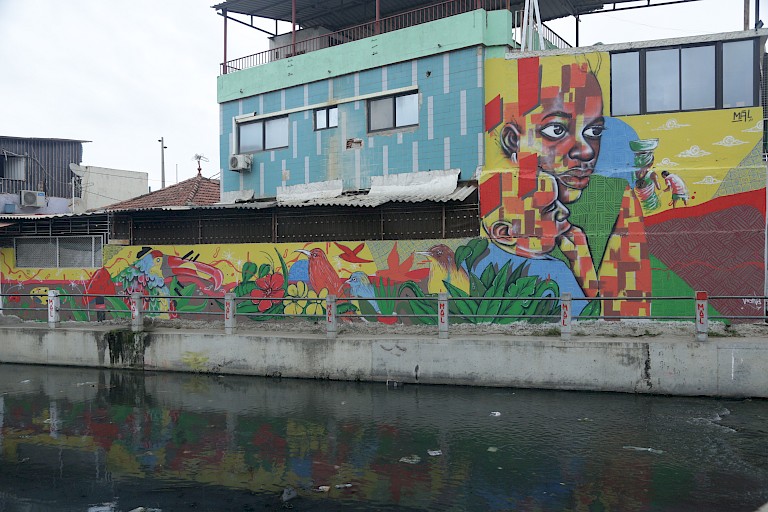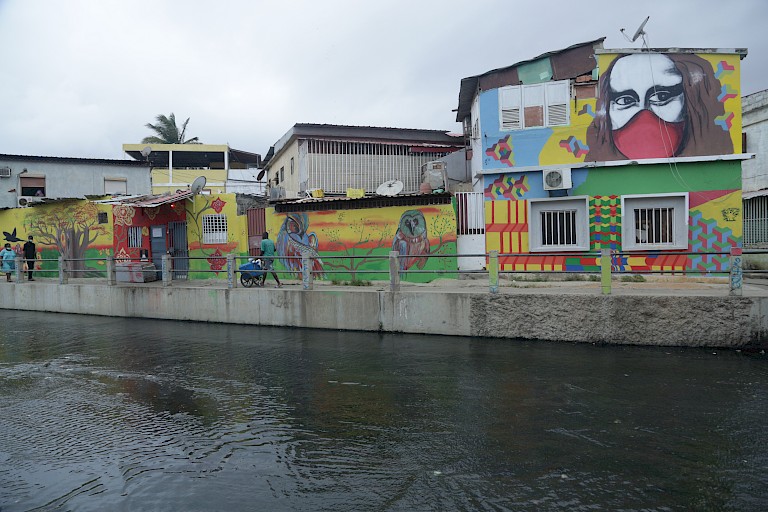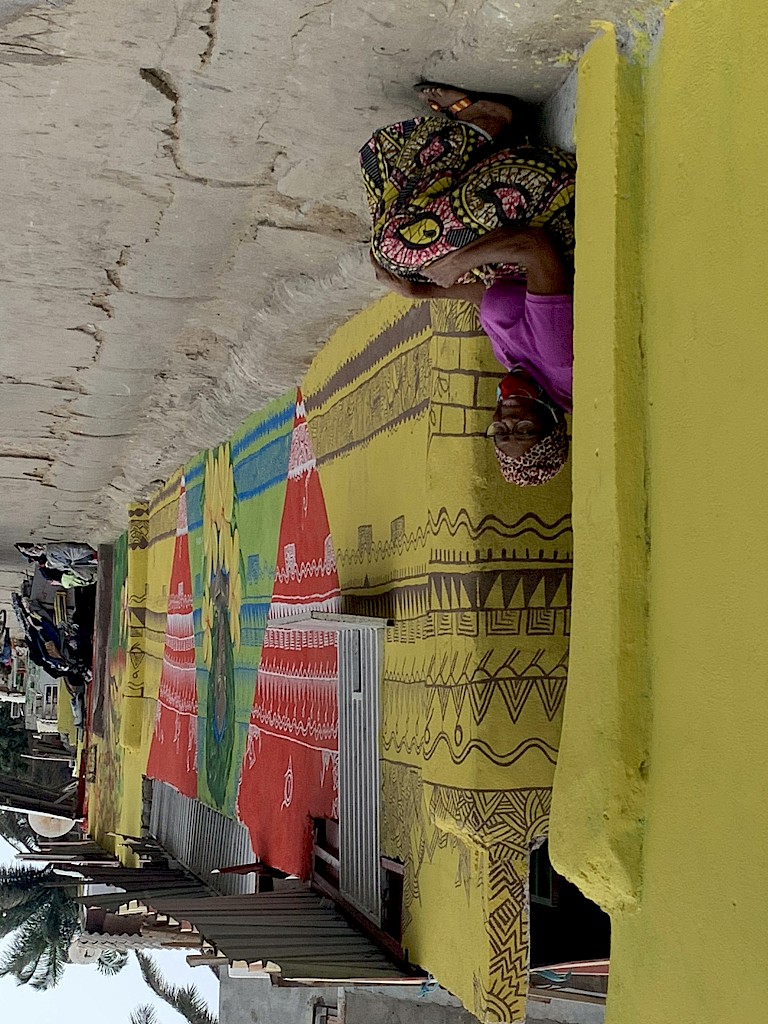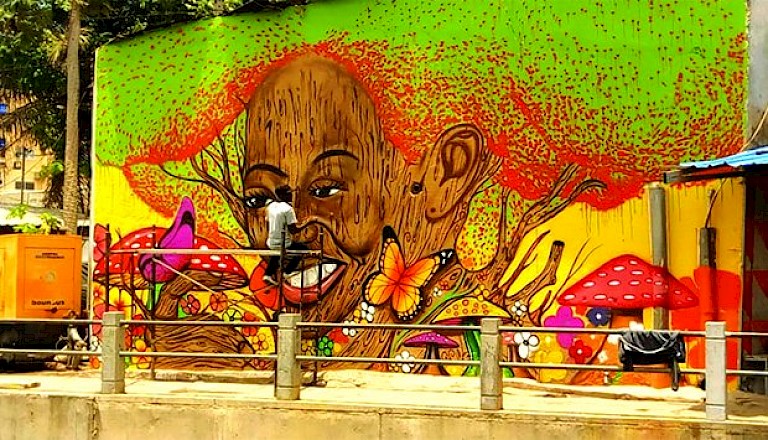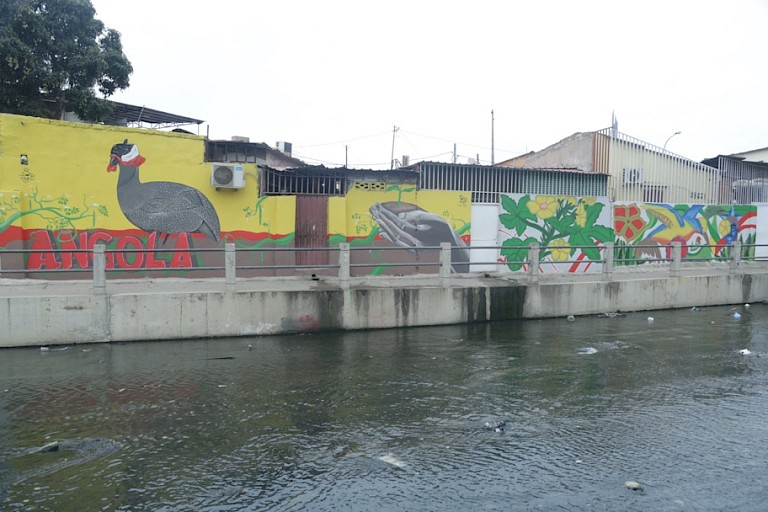



The background to the creation of this public artwork is directly adapted to the conditions imposed by the Covid-19 pandemic, and the architects should be commended for aiming to not only inspire ecological change but also for motivating the community to work together during this difficult time. Painting for awareness of the need to regenerate the river, the artwork draws from the symbol of national Angolan trees to push for more public space. In this way, the relationship between the artwork and local culture has been entrenched producing a very specific form of ecological locality that attends to the urban development needs of the local population.
The mural project includes numerous sections of the city and according to dos Santos, by placing a top in the Rio Seco ditch for the construction of a leisure park will give greater dignity to the area, create leisure facilities, spaces for organized commerce and entertainment. This vision could allow the enhancement of existing and new public places and create a harmonious and healthy environment.
The artwork brings together architects and artists in a collaborative community project and while there is not a comprehensive list of the images used in the mural given its vast scale, the drawings have a similarly large range of creative imagination. Based on the success of the first iteration, the idea is to now have an annual transformation of the canal to continue the attention to environmental issues in the city while promoting cultural activity.
For this reason, the project’s is recommended because of its impressive combination of ecological awareness,safeguarding the well-being of local populations and preserving public infrastructure and the city's cultural heritage. Winning this award would advance the potential for the architects and artists involved to continue the legacy for generations to come.
